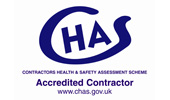Ultraflo Screed
Ultraflo Screed
I’m Andy Parkin, Managing Director of the Multi-Award-Winning Speed Screed. I’m here today to talk about Ultraflo screed.
Why Ultraflo Screed
Ultraflo screed is a liquid screed, also know as a calcium sulphate screed. It’s a hemihydrate rather than anhydrite screed, however you really won’t notice any difference in the two screeds.
The screed is pump applied, and is delivered in a ready-mix truck. It is a liquid screed, some people call it flow screed, pump screed, calcium sulphate screed, or flowing screed. Ultraflo screed is a levelling screed that can be used in various applications:
- Bonded
- Unbonded
- Floating construction
- Suitable for residential and commercial floors
- Use with underfloor heating
Low Shrinkage
If we look at the key features, the first thing that sticks out is the screed’s very low shrinkage. When you compare with a sand and cement screed, the shrinkage is greater in the cement based screed. With the calcium sulphate you don’t have anything near the same amount of shrinkage, which is quite remarkable considering the amount of water that is actually in the mix. And because there is no cement within the product (it is calcium sulphate), you don’t have issues with curling (curling and lipping of cementitious screed can occur as they dry out).
Ultraflo screed gives you minimised shrinkage cracking and no curling.
Movement Joints And Stress Relief
Movement joints that you would normally place in the screed, the area can now be extended, due to the lower shrinkage.
With this reduced shrinkage it means that you can lay up to 1000m2, at an aspect ratio of no more than 2:1 without joints. If the shape starts getting more elongated, or has re-entrant corners, services, columns then you include more joints. For a heated screed 300m2 at the same ratio without joints.
Joints can be placed in doorways, typically that is probably the easiest, and traditionally is the weakest point of the screed.
One other reason for putting joints in screed is if you have different heating zones, so you may decide you want to differentiate between two heating zones. For example you are going to heat one at 16, and one at 20. A joint will minimise heat egress from one zone to another, and also controls thermal movement.
Foot Traffic
It can be normally be trafficked between 24 hours and 48 hours.
Productivity
In regards to increased productivity, something between 1500 and 2000 square metres can be achieved. Assuming that you have a local supplier with a good rate of delivery, and the building lends itself to higher rate productivity.
Screed Thickness
You can reduce the thicknesses in comparison to a traditional sand and cement screed. A reduced depth in general means that you are experiencing faster drying, against a traditional sand and cement (not against a modified sand and cement).
Weight Reduction
Weight savings can be made when reducing thickness, if you go for example at 40mm instead of 65mm (against 65mm of traditional sand and cement).
Force Drying
If you would like, you can also force dry this product, so literally after seven days you can turn the underfloor heating on and this will help to force dry the screed. So that will reduce the drying times.
Thermal Conductivity
The density of the product means that the efficiency of the floor is greater. So it’s quicker to heat and quicker to cool down, so it’s more responsive (nearly twice as thermally conductive than a traditional sand and cement).
Compaction
Compaction wise, traditionally with sand and cement you have to make sure you get the compaction right. The characteristics of ultraflo screed means that it is self compacting. Thus meaning that you don’t have to worry about that compaction element of the laying process.
Non Wearing Screed
In terms of durability, as with all virtually all screeds, it is a non wearing screed, and it requires a covering on the surface to take the wear.
Ultraflo screed can be used with all standard floor coverings, tile, wood, carpet, vinyl, and even wet areas. For wet areas you would need to take particular care. Ultraflo screed isn’t designed to be in regular contact with water, such as communal showers, etc. Wet rooms are okay providing you have protection, if there is any breakdown, any egress of water into the screed, then you may experience delamination.
Screed Pumping
With it being a fluid product it is actually pumped into place. To give you a rough idea, six cubic metres takes approximately 30 minutes to pump into. The final finish is completed with a “dapple bar”, which is to remove any trapped air bubbles and create a level surface.
Drying
Before any floor covering are laid, the screed must be sufficiently dry and it is always best to take a moisture reading before you actually do this. So to give you an idea you’re looking at 0.5% moisture for impermeable floor coverings such as vinyl, and for carpets/ceramics you are looking at 1% because there is a certain amount of breathability.
Bonding
If the screed is to be bonded, either the screed to a concrete substrate or coverings bonded to the screed, a primer would be required as the calcium sulphate will not bond directly to cement based products without a primer (they are not directly compatible).
Minimum Depths
The minimum depths are as follows:
- Bonded 25mm
- Unbonded 30mm
- Floating 35mm domestic
- Floating 40mm commercial
- With underfloor heating there needs to be at least 25mm coverage to the top of the pipes.
Ultraflo screed really is a wonder product, if you have any further questions please contact us. We love to help!
Our Accreditations
About Speed Screed
Speed Screed Limited was founded on the key principle of providing first-class customer service. It has since built itself an impressive reputation for delivering high-quality projects across the United Kingdom.
The company’s success is built on its belief in quality work, attention to detail, on-time completion, strong working partnerships and the recruitment of top-level staff. about us >








